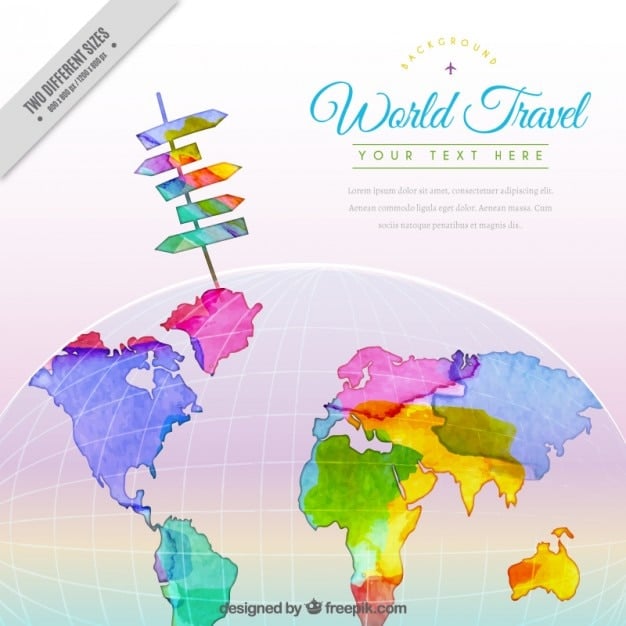US Travel Advisories: What’s Changing in 2025?

US Travel Advisories are continuously updated to reflect potential risks in international destinations, with ongoing adjustments anticipated for 2025 due to evolving global events, health concerns, and geopolitical situations.
Planning international travel requires careful consideration of potential risks, and US Travel Advisories are a crucial tool for assessing these dangers. So, are US Travel Advisories changing? A look at the latest updates for 2025 reveals what travelers need to know to stay safe.
Understanding US Travel Advisory Levels
The US Department of State issues travel advisories to inform US citizens about safety and security conditions in foreign countries. These advisories use a four-level system to communicate the degree of risk, ranging from normal precautions to do not travel.
Level 1: Exercise Normal Precautions
This is the lowest advisory level, suggesting that a country is generally safe for travel. However, it’s always wise to be aware of your surroundings and take standard safety measures.
Level 2: Exercise Increased Caution
At this level, travelers are advised to be more vigilant due to potential risks. This could include petty crime, specific health concerns, or isolated security incidents.

- Stay aware of your surroundings.
- Monitor local news and media.
- Enroll in the Smart Traveler Enrollment Program (STEP) to receive alerts and locate you in an emergency.
Understanding these levels helps travelers make informed decisions about their destinations and travel plans. Regularly checking for updates is key to staying informed.
Factors Influencing Travel Advisory Changes
Several factors contribute to changes in US Travel Advisories. These can range from political instability and crime rates to health crises and natural disasters. Understanding these influences helps travelers anticipate potential shifts in advisory levels.
- Political Stability: Countries experiencing political unrest or instability often see increased advisory levels.
- Crime Rates: High levels of violent or petty crime can lead to stricter travel warnings.
- Health Crises: Outbreaks of diseases or pandemics can significantly impact travel advisories.
- Terrorism: Threats of terrorism or previous attacks can result in higher advisory levels.
These factors are continuously monitored by the US Department of State, which adjusts advisories as needed to reflect the most current conditions. Staying informed about these factors can empower travelers to plan more effectively.

Key Regions to Watch in 2025
Looking ahead to 2025, certain regions may warrant closer attention due to ongoing or potential instability. Monitoring these areas can help travelers make proactive decisions about their itineraries.
Eastern Europe
Geopolitical tensions in Eastern Europe could continue to impact travel advisories. Travelers should stay updated on current events and potential risks.
The Middle East
The Middle East often experiences fluctuating security conditions. Monitoring advisories for this region is crucial for safe travel planning.
Staying informed about these key regions can help travelers adjust their plans and take necessary precautions.
How to Stay Updated on Travel Advisories
Keeping up-to-date with US Travel Advisories is essential for safe and informed travel. There are several reliable resources and methods to ensure you have the latest information.
The US Department of State’s website is the primary source for official travel advisories. You can search for specific countries and sign up for email alerts.
The Smart Traveler Enrollment Program (STEP) allows US citizens to register their travel plans with the State Department. This ensures you receive important updates and can be located in case of an emergency.
Consular Information Sheets provide detailed information about entry requirements, local laws, health conditions, and other important travel-related topics.
By utilizing these resources, travelers can stay informed and prepared for any potential risks.
The Impact of Global Events on Travel Safety
Global events, such as pandemics and political upheavals, can have a significant impact on travel safety and advisories. Understanding these connections is crucial for making informed travel decisions.
Pandemics and Health Concerns
The COVID-19 pandemic demonstrated how quickly global health crises can alter travel landscapes. Future outbreaks could lead to new travel restrictions and advisory changes.
Political Instability and Conflicts
Political unrest, civil wars, and international conflicts can pose serious risks to travelers. Advisories often reflect these heightened dangers.
Recognizing the impact of global events on travel safety allows travelers to adapt their plans and prioritize their well-being.
Preparing for Unexpected Travel Advisory Changes
Even with careful planning, travel advisories can change unexpectedly. Having a contingency plan in place can help you navigate these situations smoothly.
- Travel Insurance: Comprehensive travel insurance can cover unexpected trip cancellations or interruptions due to advisory changes.
- Flexible Bookings: Opt for flights and accommodations that allow for changes or cancellations without hefty fees.
- Emergency Funds: Keep access to emergency funds in case you need to make last-minute adjustments to your travel plans.
By preparing for unexpected changes, travelers can minimize stress and ensure a safer travel experience.
| Key Point | Brief Description |
|---|---|
| ⚠️ Advisory Levels | Range from normal precautions to do not travel. |
| 🌍 Influencing Factors | Political stability, crime rates, health crises. |
| 📱 Staying Updated | Use State Department website, STEP, and Consular Sheets. |
| 🛡️ Preparing for Changes | Get travel insurance and flexible bookings. |
Frequently Asked Questions
▼
US Travel Advisories are updated as needed, often in response to changing conditions or new information. It’s best to check regularly before your trip.
▼
“Exercise Increased Caution” advises travelers to be more vigilant due to potential risks such as petty crime or specific health concerns.
▼
You can enroll in STEP through the US Department of State’s website. This allows you to receive alerts and be located in an emergency.
▼
If a travel advisory changes during your trip, monitor local news, follow guidance from local authorities, and contact the nearest US embassy if needed.
▼
Travel advisories can affect your travel insurance coverage. Review your policy carefully to understand what is covered in the event of an advisory change.
Conclusion
Staying informed about US Travel Advisories and understanding the factors that influence them is crucial for safe and successful international travel in 2025. By utilizing available resources and preparing for potential changes, travelers can navigate the world with confidence.





